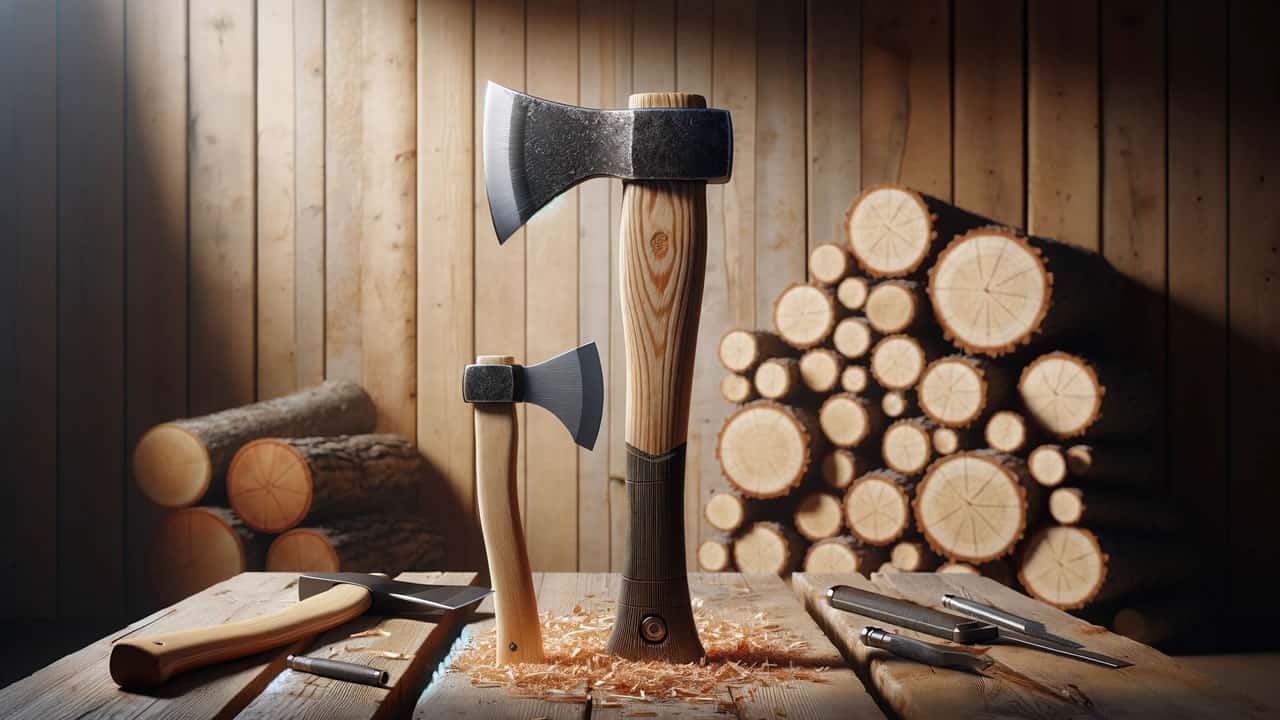When it comes to outdoor tools, axes and hatchets are often mentioned in the same breath. While they may look similar and share some functions, they are distinct tools designed for different tasks. Understanding their differences is key to determining which one you need for your specific outdoor activities or projects. This article delves into the distinct features, uses, and advantages of both axes and hatchets.
The Axe: A Versatile Heavyweight
An axe is a larger tool compared to a hatchet. It’s designed for heavier tasks and is characterized by the following features:
1. Longer Handle
The most noticeable feature of an axe is its long handle, usually made of wood, fiberglass, or composite materials. The length can vary but typically ranges from 20 inches to 36 inches. This longer handle provides greater swing power, making the axe ideal for heavy-duty tasks.
2. Heavier Head
The head of an axe is heavier than that of a hatchet, weighing between 3 to 6 pounds. The added weight delivers more force, making it suitable for challenging jobs like felling trees or splitting large logs.
3. Types of Axes
There are several types of axes, each designed for specific tasks:
- Felling Axe: Used for cutting down trees.
- Splitting Axe: Ideal for splitting wood along its grain.
- Broad Axe: Used in carpentry for squaring logs and timber.
4. Usage
Axes are best suited for:
- Tree Felling: Their weight and power make them excellent for cutting down trees.
- Wood Splitting: The heavy head splits wood efficiently.
- Large-Scale Chopping: For large projects, an axe can handle the workload better than a hatchet.
The Hatchet: Compact and Convenient
A hatchet is essentially a small, one-handed axe. It’s designed for portability and lighter tasks, with the following characteristics:
1. Shorter Handle
Hatchets have a much shorter handle than axes, typically around 10 to 18 inches in length. This makes them easy to wield with one hand.
2. Lighter Head
The head of a hatchet weighs between 1 to 2 pounds. This lighter weight, combined with a shorter handle, makes the hatchet less powerful but more precise and easy to control.
3. Versatility
While hatchets are primarily known for chopping, they often have other features:
- Hammerhead: The back of a hatchet’s head often functions as a hammer.
- Notched Blade: Some hatchets have a notch in the blade for pulling out nails.
4. Usage
Hatchets are ideal for:
- Small Chopping Tasks: Perfect for chopping small logs, branches, and kindling.
- Camping and Backpacking: Their size and weight make them great for outdoor adventures.
- General Purpose Work: Useful for a variety of tasks around the home or campsite.
Choosing Between an Axe and a Hatchet
The decision to choose an axe or hatchet largely depends on your intended use:
1. Consider the Task at Hand
- For Heavy-Duty Work: If you’re planning to fell trees or split large logs, an axe is the appropriate tool.
- For Lighter, More Precise Work: If you need a tool for smaller tasks like making kindling, a hatchet is more suitable.
2. Portability
- For Backpacking and Camping: A hatchet’s compact size makes it ideal for carrying on outdoor trips.
- For Stationary Projects: If you’re working in a fixed location, like a woodshed or a campsite, an axe’s lack of portability is less of an issue.
3. Skill and Strength
- Handling an Axe: Requires more strength and skill due to its size and weight.
- Handling a Hatchet: Easier to manage and control, making it more suitable for beginners or those with less physical strength.
4. Storage and Maintenance
- Axe Storage: Requires more space and, due to its size, may need more maintenance.
- Hatchet Storage: Easier to store due to its smaller size.
Conclusion
Both axes and hatchets are invaluable tools, each excelling in different scenarios. For heavy chopping, splitting large logs, or felling trees, an axe is your go-to tool. On the other hand, for camping trips, small chopping tasks, or if you need a tool that’s easy to carry and store, a hatchet would be the ideal choice. By understanding the specific uses and advantages of each, you can make an informed decision on which tool best fits your needs, ensuring efficiency, safety, and enjoyment in your outdoor endeavors or home projects.
